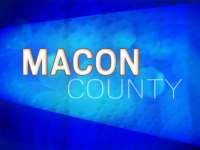Resurrecting Graveyard Fields: Blue Ridge Parkway Foundation funds makeover for popular recreation site
 Rhododendrons are opening deep pink blooms along the Blue Ridge Parkway, and new spring foliage blends into a bright blue sky dotted with puffy clouds. At the Graveyard Fields overlook this Friday morning, chirping birds and the occasional passing car are the only sounds. “Idyllic” is the word that comes to mind, but this peaceful scene is far from the norm for this pull-off near mile marker 418.
Rhododendrons are opening deep pink blooms along the Blue Ridge Parkway, and new spring foliage blends into a bright blue sky dotted with puffy clouds. At the Graveyard Fields overlook this Friday morning, chirping birds and the occasional passing car are the only sounds. “Idyllic” is the word that comes to mind, but this peaceful scene is far from the norm for this pull-off near mile marker 418.
“If this was open, you’d have cars parked in every one of these spaces and they would be parallel parked up here, and parking parallel all the way down there [to the sign some 100 yards away] and double parked on both sides downhill,” said David Anderson, landscape designer for the Blue Ridge Parkway, gesturing across the gravel-and-roofing-littered construction site.
Though the parking lot accommodates only 18 vehicles, he’ll often see 100 cars parked around the overlook on a given summer weekend.
“Maybe more,” chimes in Debra Flowers, acting chief ranger for the parkway.
The overlook and parking area are closed at the moment, surrounded by a padlocked chain link fence. The construction crew has taken a day off, the prefabricated toilet partially installed and the soon-to-be-expanded parking lot still in progress. More fencing closes off the trailheads. The present quietness of the area is no fluke.
Winter weather and delays stemming from higher-than-anticipated bids forced construction to happen during the busy summer season, but Anderson is aiming for a July 4 reopening. And he’s looking forward to the result.
Related Items
Anyone visiting the site that day will probably first notice the newly installed toilet, complete with a roofed breezeway and bench, with eyes next sliding to the parking lot, more than doubled in size from 18 spaces to 40. Subtler changes will include new educational signage to teach visitors the basics of resource protection, and an expanded boardwalk on the trail to prevent further erosion of a particularly vulnerable section.
Anybody arriving after the parking lot is full, however, would have a hard time finding a spot elsewhere. The Graveyard Fields project includes installing a battery of No Parking signs along the roadside, with park law enforcement doling out fines to people who ignore them.
Loved to death
The goal, though, isn’t to spoil anybody’s fun. Rather, it’s to re-create the site to provide a better experience for all visitors, both in the present and in the future.
“One hundred cars may want to come here, but if there were only 40, everybody’s experience would be better, in my opinion,” Anderson said. “I’d rather go to the mall now than Black Friday.”
In addition to packing down the soil and creating a traffic hazard as people, dogs and kids walk across a curvy road used by cars, motorcycles, bikes and everything else, having too many people on site takes away from its basic appeal. Graveyard Fields is home to unusual birds such as the belted kingfisher, peregrine falcon and indigo bunting, and it provides habitat for 7 rare animal species and four rare plant species. But when there are too many people, nobody gets to enjoy them.
“If there’s so many people at an area, you don’t get that feeling of solitude and you don’t see wildlife because they’ve already been driven from the area,” Anderson said.
Then there’s the impact to the land itself. The soils in this area are extremely erodible, so once the ground gets torn up, the rainwater just keeps channeling through, carrying the fragile soil with it. That, in turn, impacts the plant community.
But Graveyard Fields is more than just an overlook with a couple of spur trails. The parking lot is only 150 feet away from the boundary of the Pisgah National Forest, and trails leaving from the overlook hook directly into the Mountains to Sea Trail. The site offers easy access to backcountry camping, blueberry picking and three popular waterfalls.
“It is one of the most well-loved sites on the Blue Ridge Parkway,” said Willa Mays, chief development officer of the Blue Ridge Parkway Foundation.
It’s also, perhaps, one of the most over-loved sites. With no bathroom available, tufts of toilet paper were surfacing all over the area, and erosion was setting in heavily in some places. Something had to be done, so a little over five years ago, the foundation, the parkway and the U.S. Forest Service began talking about what could be done.
“The traffic up there and the people that want to enjoy Graveyard Fields at every time of the year, I don’t think the people who first designed that site could have ever dreamed how important it would become,” said Leesa Brandon, the parkway’s public information officer.
Planning a revival
So, the planning and fundraising began. Finding money is always a challenge for the parkway, perhaps more so than for other national parks. Though the Blue Ridge Parkway often pulls in more visitors per year than any other national park, it doesn’t charge any entrance fee. And competing against big parks like Yellowstone and Yosemite for park service dollars can be tough, so the nonprofit Blue Ridge Parkway Foundation is often essential in finding the money for projects like Graveyard Fields.
“We’re appreciative of the foundation for their leadership rule in helping making this a reality,” Brandon said.
The parkway needed about $330,000 to get the project done, and a Scenic Byways grant from the U.S. Department of Transportation took care of $261,000 of that. The foundation has raised about $20,000 of the remainder, but it’s still looking for about $50,000 more. Raising the cash will be a challenge, but Mays believes that the process of doing so will do about as much for the parkway as the project itself.
“It’s more than just raising money and going out and building a project,” Mays said. “It’s about a long-term investment in making sure it stays beautiful and safe for everyone who visits there.”
Accomplishing that depends on the collective decisions that the park’s 13 to 15 million yearly visitors make when no one else is watching. And influencing people’s decisions, in turn, requires education and engagement. It’s the first piece of this puzzle that is Flowers’ bread and butter, those exchanges with visitors who are in the middle of taking a souvenir rock home or picking themselves a bouquet, not thinking about what the place would look like if everyone did the same thing.
“It’s watching that light bulb moment of ‘I haven’t thought about it before,’” Flowers said. “It takes education.”
By educating the community and then relying on them to help with the site’s revival, Mays theorizes, those people get caught up in the mission of the parkway for good.
“At the foundation, we’re really trying to build a community of stewards, people who are attracted to a particular place,” she said.
The balancing act
There’s still a ways to go. Over at mile marker 418, dirt paths border the chain link fence where people have tried to skirt the boundary. Next to the blocked-off steps descending the trail is a path of dirt made from the feet of visitors determined to hike the trail anyway, regardless of the signs announcing its closure. Anderson shakes his head and bends down to snap a documentary photo.
“This is an example of why this area is closed,” he said.
Such informal trails disturb the fragile soil, yes, but there’s also the danger stemming from an active construction site in a remote area with little to no cell service that gets very dark at night.
“You can’t protect people from themselves,” Anderson said.
While the permanent vault toilet — a solar-powered three-stall affair that captures and stores rainwater to use for cleaning — is not yet operational, a portable one sits onsite for the construction crew to use. It is padlocked.
“They came back from a long weekend and it was almost overflowing,” Anderson explains. So they had to lock it up.
That balancing act of catering to a public that is sometimes overeager to love their natural resources while also providing education and resource protection is sometimes frustrating. But it’s also rewarding.
“There is no place I would rather be,” Flowers said. “You think about the people that are doing the wrong thing. The folks that are really enjoying the parkway and everything we have to offer completely outweigh the negatives.”
And the hope is that as Western North Carolina grows in population, it will also grow in stewardship education. For both the parkway and the foundation, this project is just one step toward the future both hope to see for the Blue Ridge Parkway.
“You want to invite people to explore the parkway, and you want them to have a wonderful experience,” Anderson said, “but you also want to keep them safe and you want to make sure they go home happy and educated. But you do have to balance the park service mission of preservation and protection for future generations.”
How you can help
The construction project at Graveyard Fields is scheduled to wrap up by July 4, but the park service needs some help in the meantime:
• Don’t try to enter the closed site before it reopens. Doing so is both a safety hazard and a resource issue.
• Don’t slow down to look at the progress while driving past. Graveyard Fields is on a curvy section of road that requires full attention to maneuver.
• Do help the Blue Ridge Parkway Foundation finish funding the project, which is still $50,000 short. To donate, contact Willa Mays at 866.308.2773 ext. 305 or This email address is being protected from spambots. You need JavaScript enabled to view it..









